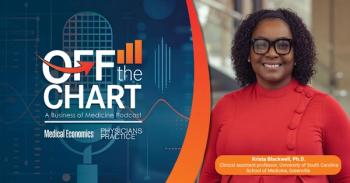
Top health systems pledge $100M to fight staffing and student debt crises
Key Takeaways
- Health systems are investing over $100 million in student loan repayment and hiring incentives to address workforce shortages and student debt.
- Clasp's "retention-driven recruitment" model offers job commitments to students before graduation, with loan forgiveness tied to retention milestones.
Hospitals and health systems bet on early job offers and loan repayment as a new workforce strategy gains steam.
In a move to address the twin crises of clinical
The initiative, coordinated through the startup
A new model for recruitment
Clasp calls it “retention-driven recruitment.” The model allows hospitals to extend job offers to students still in school, with loan repayment funds unlocked only after the employee stays for a set period — usually three years. It’s a strategy designed to build deeper loyalty, reduce turnover and stretch recruitment dollars further.
Among the early adopters: Boston Children’s Hospital, Memorial Sloan Kettering, Northwestern Medicine, Novant Health, OhioHealth, MyEyeDr. and VCA Animal Hospitals.
Together, they’ve committed more than $101.2 million to help pay down debt for nurse anesthetists,
“At Novant Health, we’re working to build a healthier future for all — from patients and communities to our own clinicians and team members,” said Sebastien Girard, senior vice president and chief people officer at Novant Health. “By relieving financial burden upfront, we’re building loyalty from day one — and setting a new bar for what it means to invest in our future teams.”
Early results are promising
There are signs the approach is working. One health system with more than 30,000 employees replaced traditional sign-on bonuses with student loan repayment this spring — surpassing its hiring goal by 130% in just 20 days, according to Clasp.
Across its network, early data suggests systems could save up to $5 million in the first year by reducing contract labor costs, turnover and bonus spending. Some roles using Clasp’s model have seen turnover drop to just 5%. The company estimates a potential 440% return on investment.
“This isn’t just about offering a benefit — it’s about rewiring how health care systems attract and retain talent,” said Tess Michaels, founder and CEO of Clasp. “These leaders aren’t just responding to a crisis. They’re shaping the future of work in health care — and setting a new standard that others will follow.”
Debt rising as federal aid tightens
The Clasp model comes as student debt for health care professionals continues to climb. Physical therapists, occupational therapists and physician assistants often graduate with more than $100,000 in debt. New veterinarians typically owe closer to $150,000 and most medical students finish with more than $200,000 in loans.
At the same time,
Critics warn the cap will push more students toward private loans, which come with fewer protections and stricter repayment terms. That shift could hit first-generation students and those from underrepresented backgrounds the hardest.
“This added barrier could deter qualified candidates from pursuing a medical degree altogether, ultimately worsening the existing and expected physician shortage,” Kristen Earle, program leader for student financial aid services at the Association of American Medical Colleges, told
The AAMC projects the U.S. could face a shortage of up to 86,000 physicians by 2036.
Expanding Access and Diversifying the Pipeline
To help close that gap, Clasp has secured up to $100 million in no-cosigner loan funding aimed at students from low- and middle-income backgrounds. The goal is to expand access to high-impact careers — without traditional financial barriers.
Students in programs for nurse anesthesia, radiology, veterinary medicine and respiratory therapy are among those eligible. Employers can tailor repayment offers to their hiring needs, making it a flexible alternative to lump-sum bonuses.
Though the movement is currently being led by large health systems, Clasp’s success could foreshadow a wider shift in how health care employers — private practices included — approach recruitment and retention. For smaller organizations, debt repayment could soon move from perk to prerequisite.
As federal lending tightens and education costs continue to rise, hospitals and practices alike may find themselves needing to rethink what it means to truly invest in their workforce.
Newsletter
Stay informed and empowered with Medical Economics enewsletter, delivering expert insights, financial strategies, practice management tips and technology trends — tailored for today’s physicians.
















